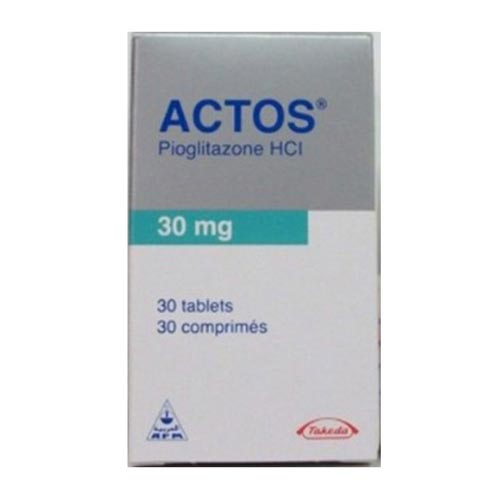Description
Pioglitazone is a medication belonging to the thiazolidinedione class of drugs that are used as adjuncts to diet, exercise, and other diabetes medications to manage type 2 diabetes mellitus. The thiazolidinedione class of medications exerts its pharmacological effect primarily by promoting insulin sensitivity and the improved uptake of blood glucose. Following entry into fat cell nuclei, pioglitazone selectively binds to the Peroxisome Proliferator-Activated Receptor Gamma (PPARγ).
PPARs are ligand-activated transcription factors that are involved in the expression of more than 100 genes, and affect numerous metabolic processes, notably lipid and glucose homeostasis.
PPARγ in particular is abundantly expressed in lipid cells (adipocytes), where it plays a central role in lipid production and regulation of lipid metabolism.
Pioglitazone is indicated as an adjunct to diet and exercise to improve glycemic control in adults with type 2 diabetes mellitus.
Pharmacodynamics
Pioglitazone enhances cellular responsiveness to insulin, increases insulin-dependent glucose disposal and improves hepatic sensitivity to insulin. In patients with type 2 diabetes, the decreased insulin resistance produced by pioglitazone results in lower plasma glucose concentrations, lower plasma insulin concentrations, and lower HbA1c values.
Additionally, patients treated with pioglitazone had mean decreases in serum triglycerides, mean increases in HDL cholesterol, and no consistent mean changes in LDL and total cholesterol.
Mechanism of action
Pioglitazone acts as a selective agonist at Peroxisome Proliferator Activated Receptor Gamma (PPARγ) in target tissues for insulin action such as adipose tissue, skeletal muscle, and liver.
Activation of PPAR-gamma receptors increases the transcription of insulin-responsive genes involved in the control of glucose production, transport, and utilization. In this way, pioglitazone both enhances tissue sensitivity to insulin and reduces the production of glucose via the liver (hepatic gluconeogenesis).
Thus, insulin resistance associated with type 2 diabetes mellitus is improved without an increase in insulin secretion by pancreatic β cells.
Side effects
All medicines may cause side effects, but many people have no, or minor, side effects.Some medical conditions may interact with Pioglitazone.
Tell your doctor or pharmacist if you have any medical conditions.
Common side effects may include: headache, muscle pain or cold symptoms such as stuffy nose, sinus pain, sneezing, sore throat.
This is not a complete list of all side effects that may occur. If you have questions about side effects, contact your health care provider.


Reviews
There are no reviews yet.